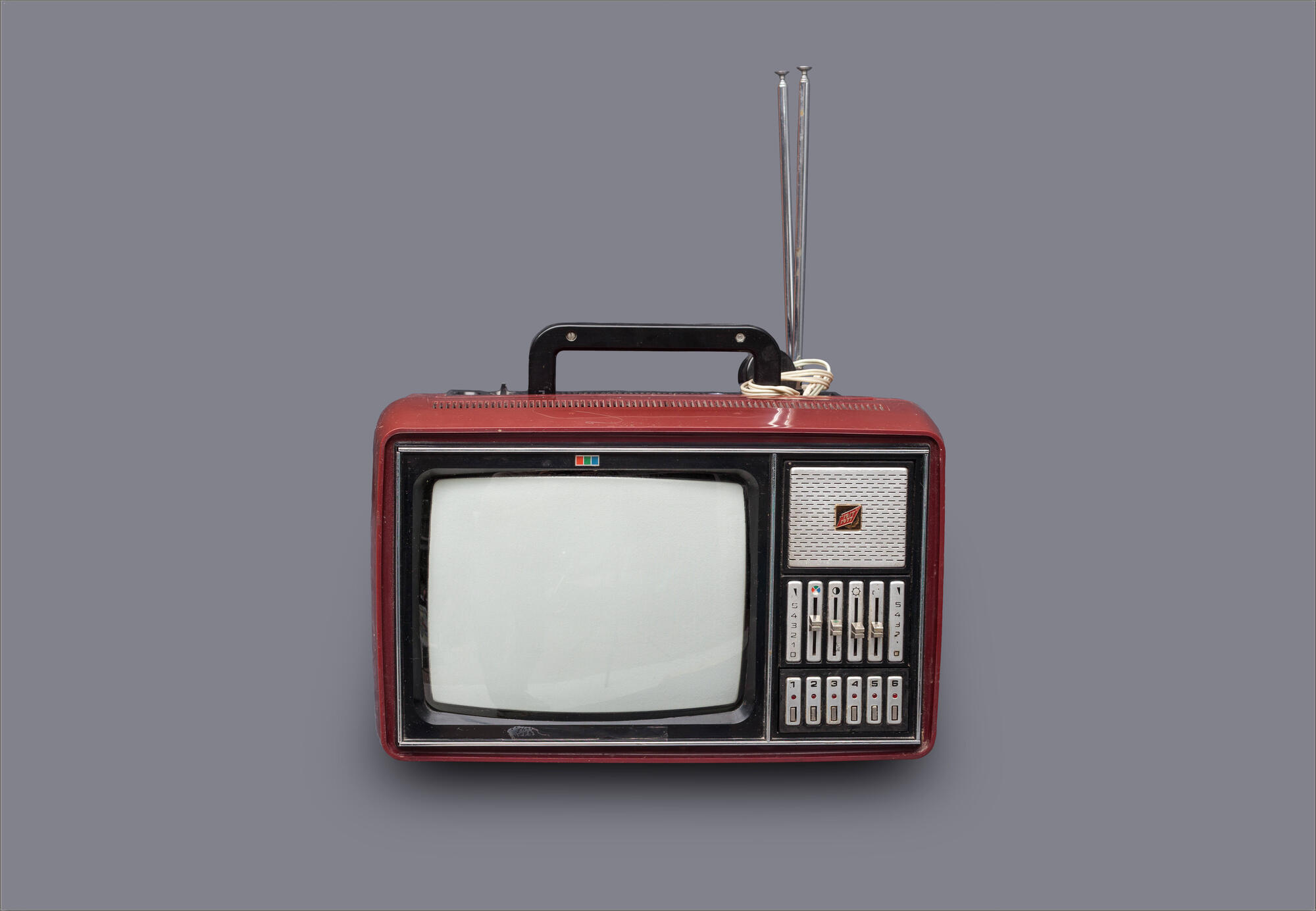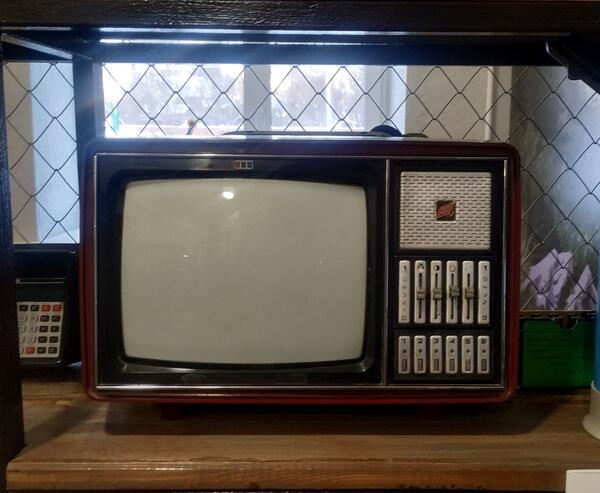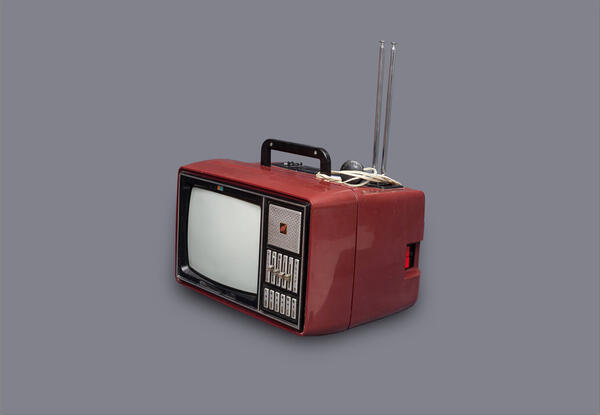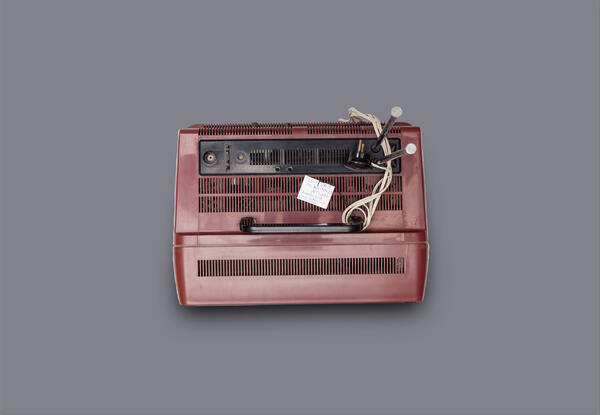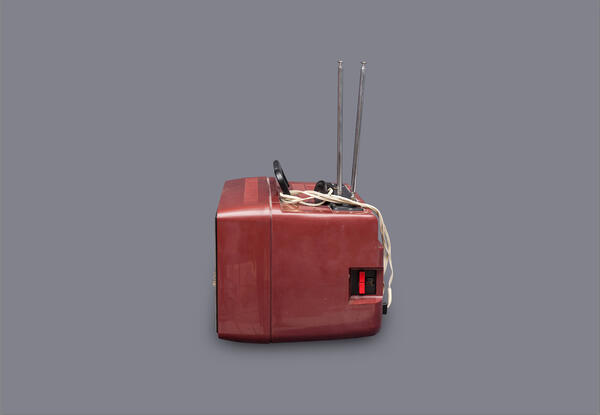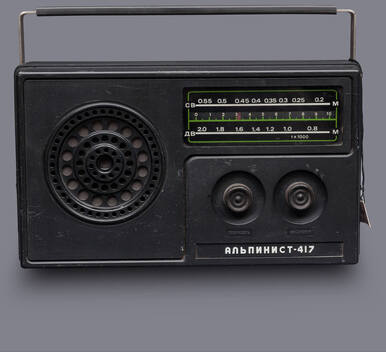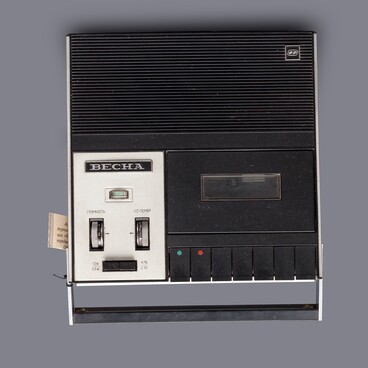Since 1977, the Elektronika Ts-430/D color TV receiver was produced at the Mezon capacitor factory and the Pozitron NPO (research and production association) in Leningrad. The companies had been founded back in the 1950s.
The 25LK2Ts CRT for the TV set was developed at the Lviv Kinescope Factory. The screen diagonal size was 25 cm. The Elektronika Ts-430/D portable color TV set was designed to receive transmissions on any of the 12 channels in the meter wavelength band, and the model with index “D” — on any of the channels in the decimeter wavelength band, as well.
The TV was made in a shockproof polystyrene cabinet that was a natural material of choice for a portable device and came in various design options in red, orange, or white. Self-powered, it allowed watching TV even in a car.
The engineers provided the option to turn off the loudspeaker system: in this case, the sound could be output through headphones. In addition, owners of such TV could connect it to home video cassette recorders to make records.
The models were equipped with automatic frequency control and automatic gain control systems. The TV provided automatic demagnetization of the screen and the CRT mask at the moment when the receiver was switched on, reducing the impact of external magnetic fields on the quality of the color image.
For overload protection, the power supply unit featured an electronic circuit that automatically disconnected the TV from the AC mains upon the occurrence of overload and re-connected the device once the power supply characteristics came back to normal. The power consumption was 50 W and its weight was 8.7 kg. The price of the Soviet portable TV set Elektronika Ts-430/D was 430 rubles.
Since 1980, Leningrad NPO Pozitron started manufacturing the Elektronika Ts-431/D TV set. It was very similar to the 430th model in terms of circuitry and internal design but had a modified appearance. In addition, the model had brightness, volume, and color control functions.
The 25LK2Ts CRT for the TV set was developed at the Lviv Kinescope Factory. The screen diagonal size was 25 cm. The Elektronika Ts-430/D portable color TV set was designed to receive transmissions on any of the 12 channels in the meter wavelength band, and the model with index “D” — on any of the channels in the decimeter wavelength band, as well.
The TV was made in a shockproof polystyrene cabinet that was a natural material of choice for a portable device and came in various design options in red, orange, or white. Self-powered, it allowed watching TV even in a car.
The engineers provided the option to turn off the loudspeaker system: in this case, the sound could be output through headphones. In addition, owners of such TV could connect it to home video cassette recorders to make records.
The models were equipped with automatic frequency control and automatic gain control systems. The TV provided automatic demagnetization of the screen and the CRT mask at the moment when the receiver was switched on, reducing the impact of external magnetic fields on the quality of the color image.
For overload protection, the power supply unit featured an electronic circuit that automatically disconnected the TV from the AC mains upon the occurrence of overload and re-connected the device once the power supply characteristics came back to normal. The power consumption was 50 W and its weight was 8.7 kg. The price of the Soviet portable TV set Elektronika Ts-430/D was 430 rubles.
Since 1980, Leningrad NPO Pozitron started manufacturing the Elektronika Ts-431/D TV set. It was very similar to the 430th model in terms of circuitry and internal design but had a modified appearance. In addition, the model had brightness, volume, and color control functions.
